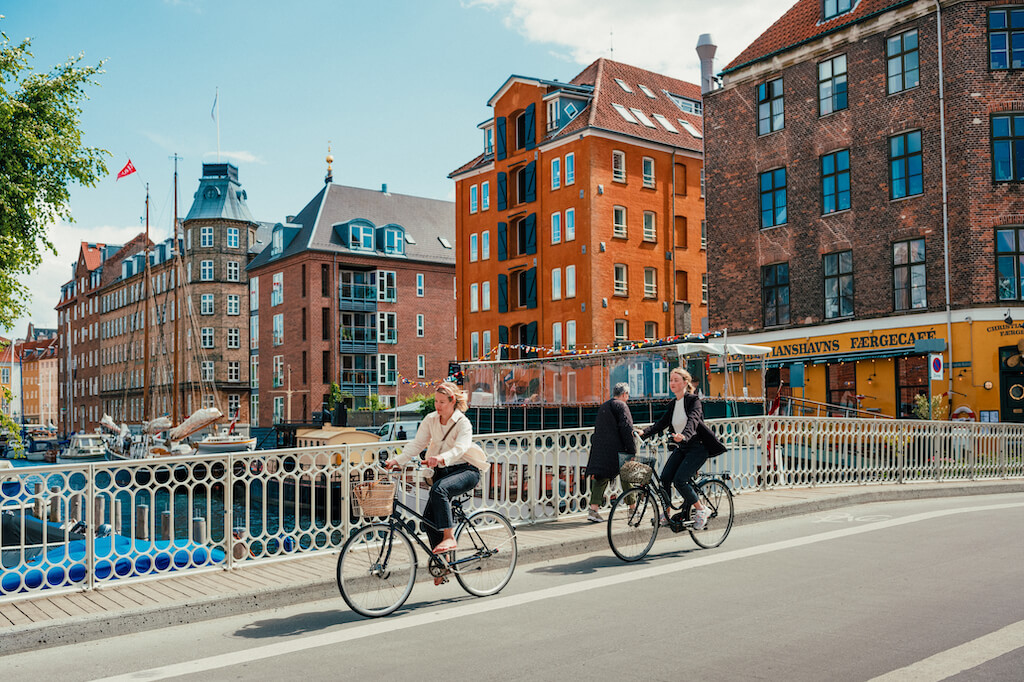Autumn Gear Guide
Find inspiration in our Gear Guide that will keep you out on your bike through wind or rain.
Download NowThe images of the Dutch that we have come to know and love is of a cycling utopia where stylish folks ride their upright bicycles in their work outfits, hair blowing in the wind. The idea being that it is so safe and common to ride a bicycle there that one doesn’t even need a […]
The images of the Dutch that we have come to know and love is of a cycling utopia where stylish folks ride their upright bicycles in their work outfits, hair blowing in the wind. The idea being that it is so safe and common to ride a bicycle there that one doesn’t even need a helmet. A new government campaign suggests that it is time to evolve that idea and in order to prevent untimely deaths it is time to get on the bicycle helmet train.
The Dutch government has launched a new national bike helmet campaign to encourage more cyclists to wear helmets, responding to growing concern over the number of serious injuries sustained in bike accidents each year. While the Netherlands is widely considered a global model for safe and accessible cycling, helmet usage remains strikingly low—only around 4 percent of Dutch cyclists wear one regularly, according to recent government figures.
This new bike helmet campaign, called “Zet ‘m Op” (Put It On), aims to challenge prevailing attitudes toward helmet use and shift public opinion over the next decade. The goal is ambitious: to increase regular helmet use to 25 percent of the population within ten years. Officials say the effort is long overdue, pointing to troubling statistics that show just how often bike rides end in emergency room visits. Last year alone, approximately 74,300 cyclists in the Netherlands were treated in hospital A&E departments after accidents. That averages out to nearly 200 people every single day.

Few people wear bicycle helmets in Copenhagen
“Most Dutch people do not currently wear bicycle helmets, but you still see them more and more often on the street. I think that is a good development, because a helmet ensures that the consequences of an accident are less serious,” said Dutch Minister Barry Madlener. “That is why my ministry is committed to voluntary bicycle helmet use. We focus in particular on parents of young children, commuters and the elderly. If parents set a good example and children wear a helmet from an early age, the use will grow from generation to generation. The more visible it becomes, the more normal it becomes.”
Many of these injuries are far from minor. Data from safety organization VeiligheidNL shows that more than half of the cases involved serious trauma, including broken bones and head injuries—ranging from concussions to life-altering damage to the brain and skull. The growing popularity of electric bikes, which can reach higher speeds than traditional bicycles, is also contributing to the severity of these accidents. As more people—particularly older riders—embrace e-bikes for their convenience and speed, the risk of high-impact crashes is climbing.
Martijntje Bakker, director of VeiligheidNL, is one of the initiators of Bicycle Helmet Day.
“The number of bicycle accidents unfortunately remains high. For example, young children also sustain injuries after an accident, which in one in ten cases leads to brain damage,” said Bakker (translated). “Enough reason for parents to set a good example and put on a helmet for both themselves and your child. Because cycling is very healthy, but you also want to stay healthy.”
In a country so deeply ingrained with a culture of casual cycling, the idea of donning a helmet has often been dismissed as unnecessary or even socially awkward. Many riders feel that the country’s comprehensive cycling infrastructure, including separated bike lanes and traffic-calmed streets, eliminates the need for protective gear. But the government hopes to challenge that mindset with a campaign that leans into behavioral change and visibility. Part of the strategy involves hosting try-on events across the country, where people can see and feel what modern helmets are like—lighter, sleeker, and more stylish than in the past. There will also be retail discounts to reduce cost as a barrier, and the government is working with manufacturers to improve helmet aesthetics in hopes of boosting appeal.
The bike helmet campaign is specifically targeting key demographics shown to be at higher risk. Parents of young children are being encouraged to model helmet use as a way to instill safe habits early on. Commuters, who cycle regularly and often during busy traffic hours, are another focus. But the biggest concern centers around older cyclists, particularly those over the age of 55. This age group accounts for nearly half of all emergency department visits related to bike accidents. Children under 11 also feature heavily among those injured, reinforcing the need to shift public attitudes toward helmet use across all generations.
While the initiative stops short of proposing a helmet mandate, it marks a significant cultural pivot in a country where riding a bike is second nature—and helmets have long been seen as optional at best. With the launch of Zet ‘m Op, the Dutch government is betting that education, accessibility, and normalization can succeed where regulation might face resistance. The message is simple but urgent: as cycling evolves, so should safety habits.
Find inspiration in our Gear Guide that will keep you out on your bike through wind or rain.
Download Now
Leave a comment